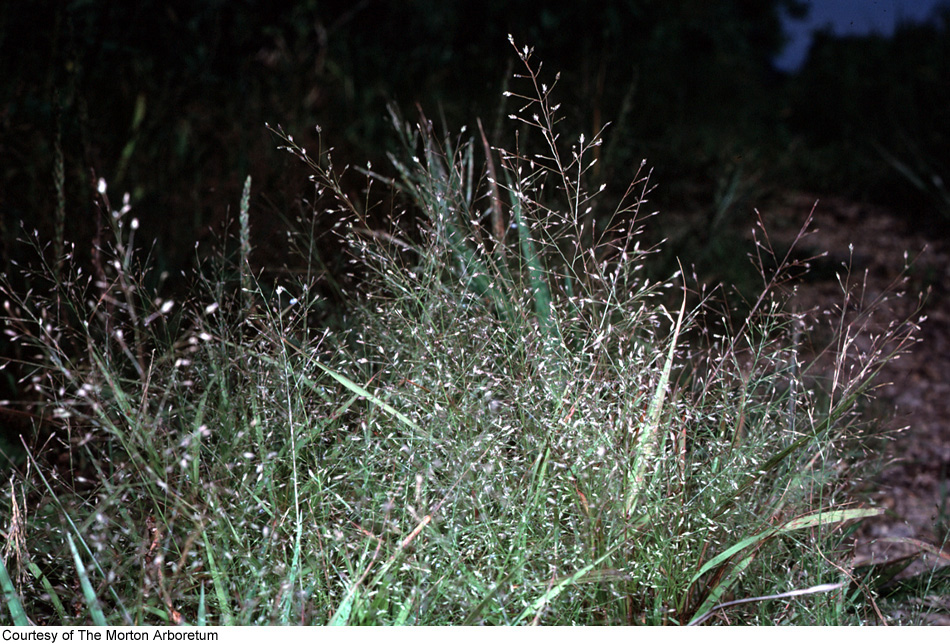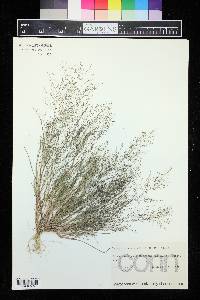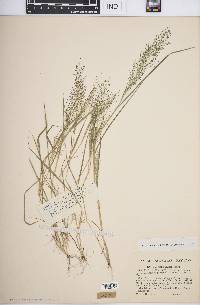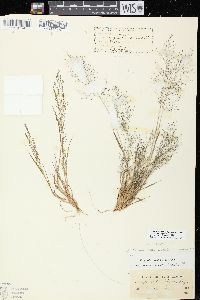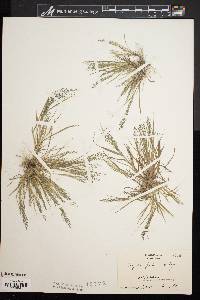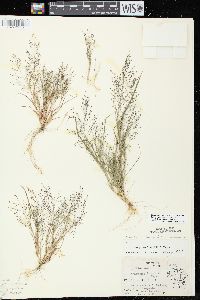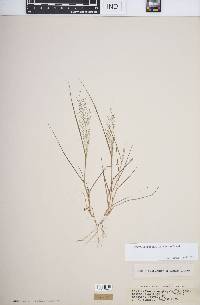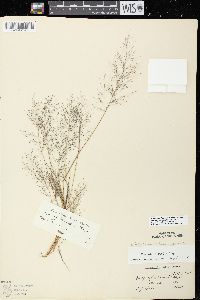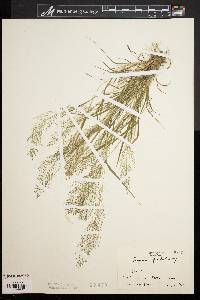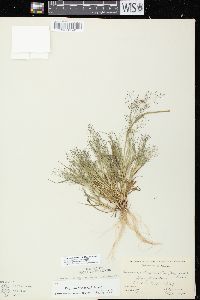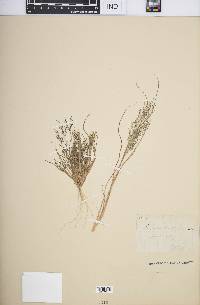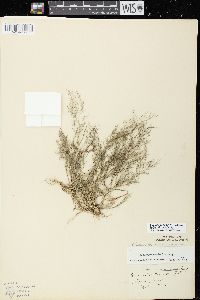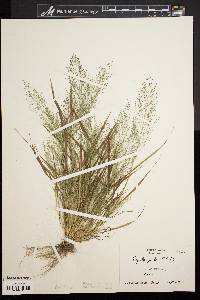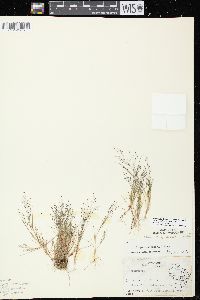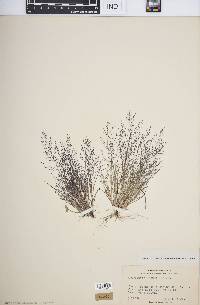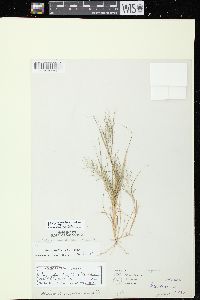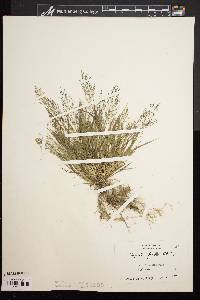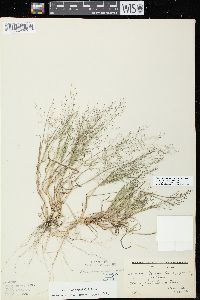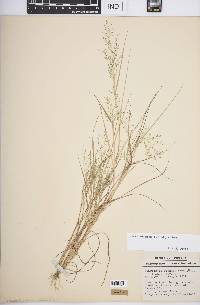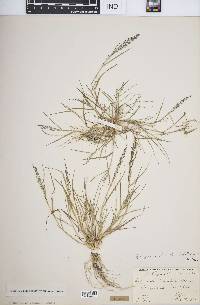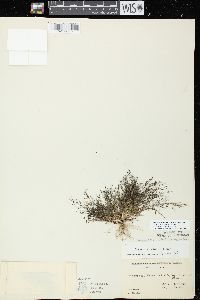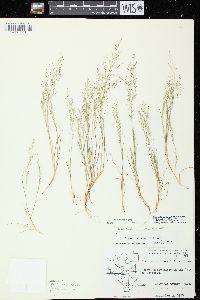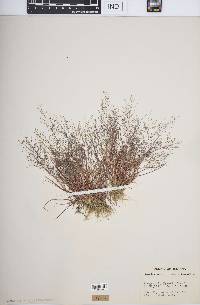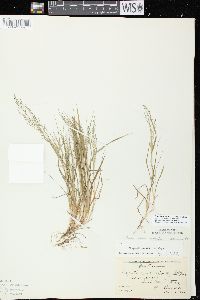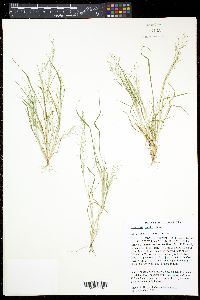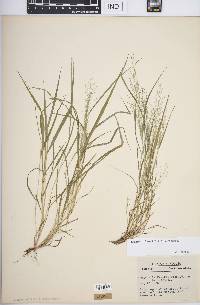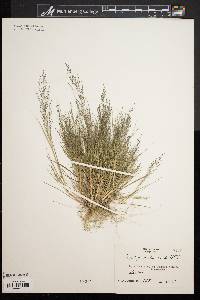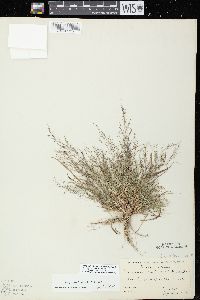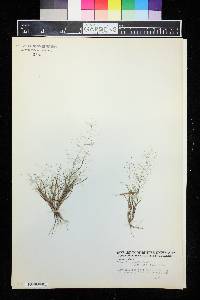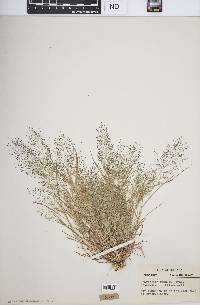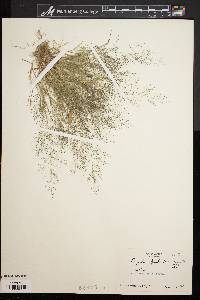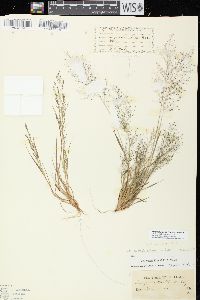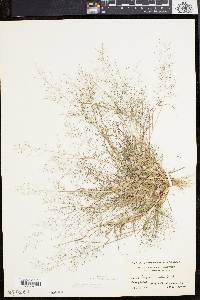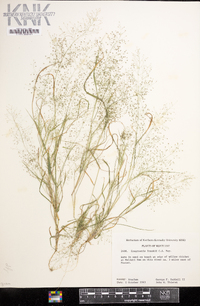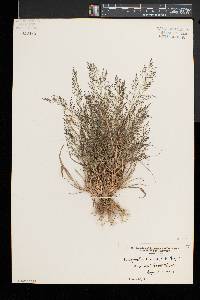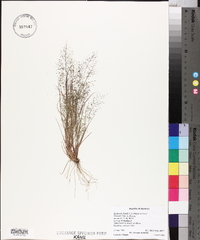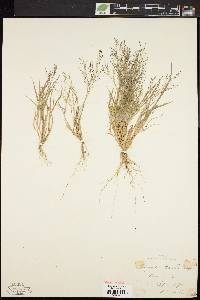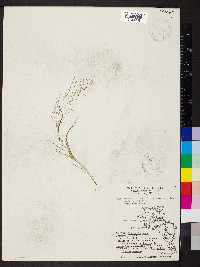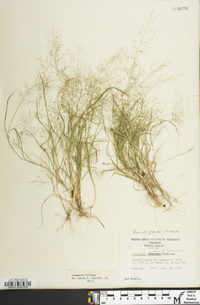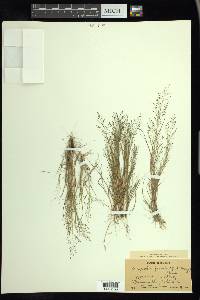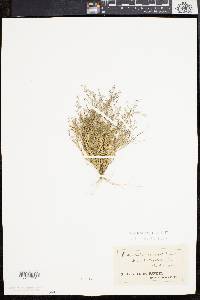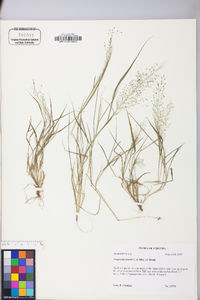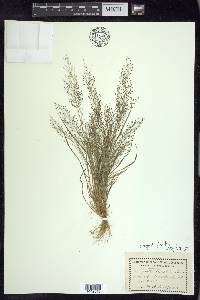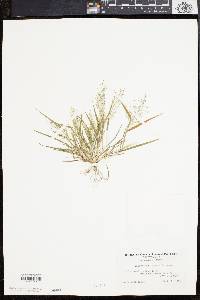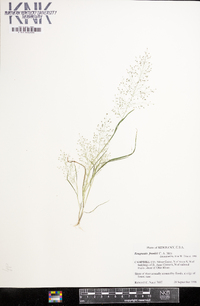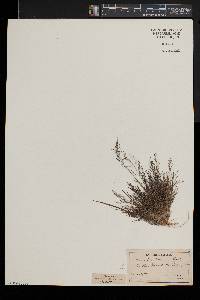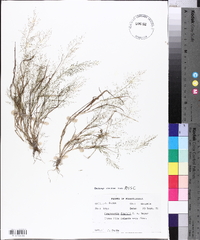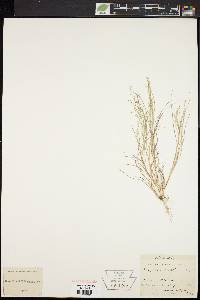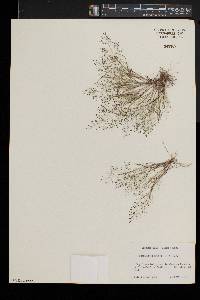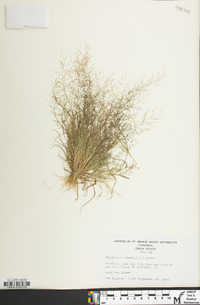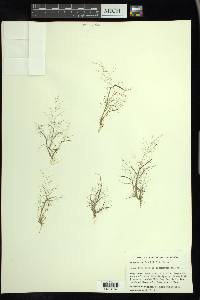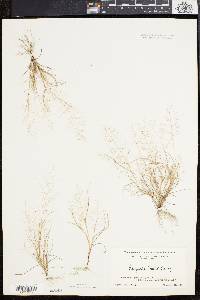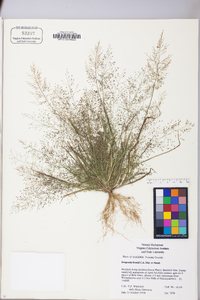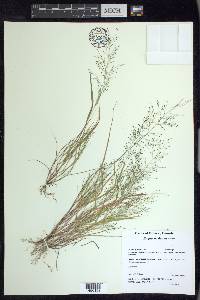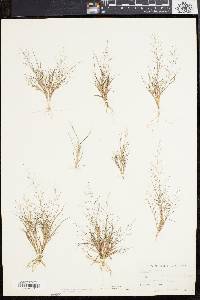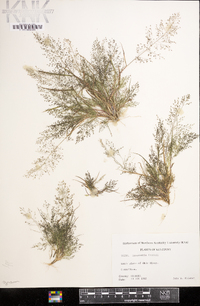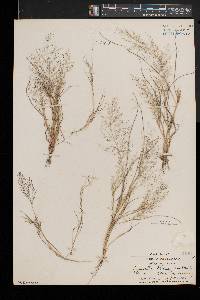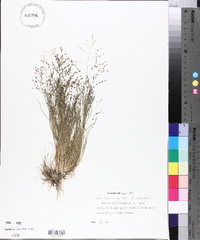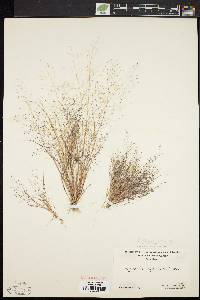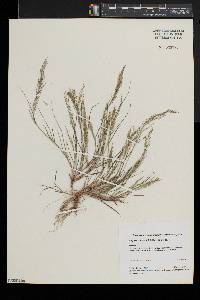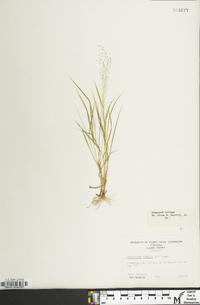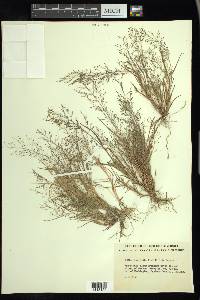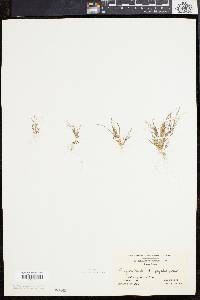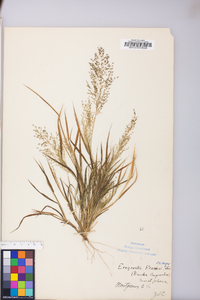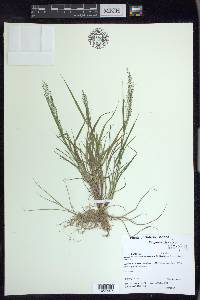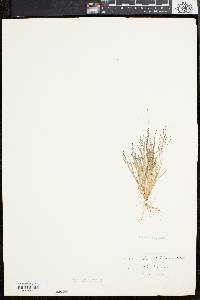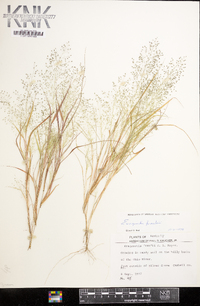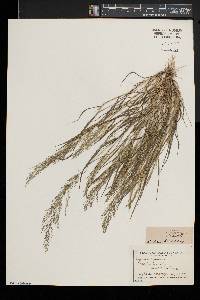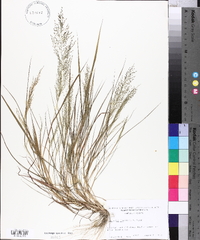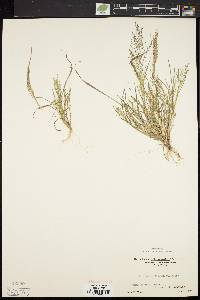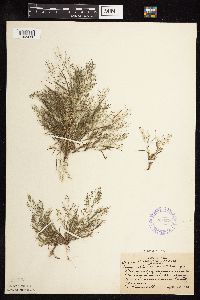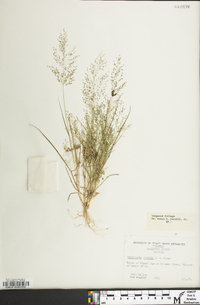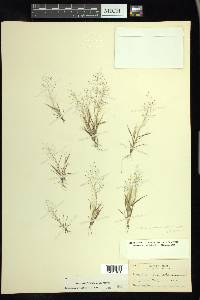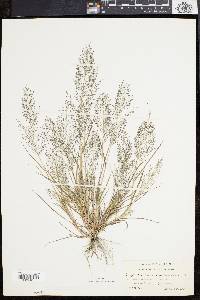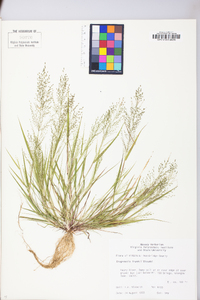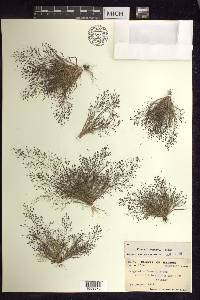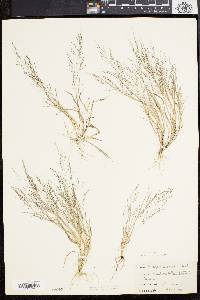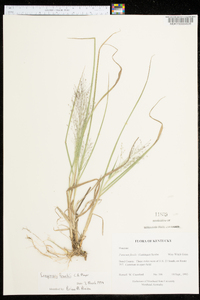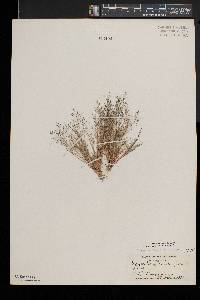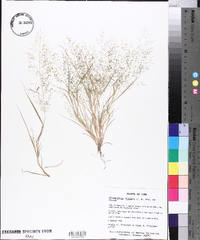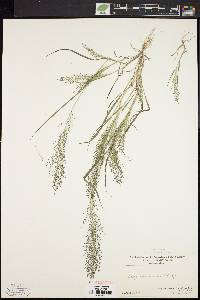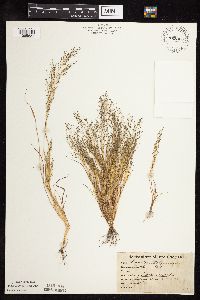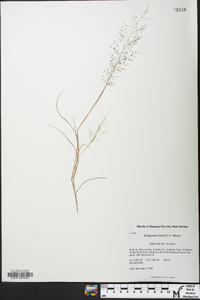Eragrostis frankii
|
|
|
|
Family: Poaceae
Sandbar Love Grass, more...sandbar lovegrass (fr: Éragrostide de Frank)
[Eragrostis capillaris var. frankii (C.A. Mey. ex Steud.) Farw., moreEragrostis erythrogona Nees ex Steud., Eragrostis frankii var. brevipes Fassett, Eragrostis frankii var. frankii , Poa micrantha Schult.] |
Plants annual; cespitose, without innovations. Culms 10-50 cm, erect to geniculate, glabrous, often with glandular pits below the nodes. Sheaths mostly glabrous, apices hirsute, hairs to 4 mm, often also with glandular pits; ligules 0.2-0.5 mm, ciliate; blades (2)4-10(21) cm long, 1-4 mm wide, flat to involute, glabrous abaxially, scabridulous adaxially. Panicles 4-20 cm long, less than 1/2 the height of the plants, 2-10(14) cm wide, narrowly elliptic, open; primary branches 2-6 cm, compact, diverging 20-70° from the rachises, capillary, sometimes with glandular pits, naked basally; pulvini glabrous; pedicels 1.5-5 mm, divergent. Spikelets (1.7)2-4(5.6) mm long, 1-2(2.5) mm wide, broadly ovate to lanceolate, plumbeous to reddish-purple, with 3-6 florets; disarticulation acropetal, paleas persistent. Glumes narrowly lanceolate to lanceolate, hyaline; lower glumes 1-1.5 mm; upper glumes 1-1.8 mm; lemmas 1.1-1.6 mm, broadly ovate, membranous, lateral veins inconspicuous, apices acute; paleas 1-1.5 mm, hyaline, keels scabridulous, apices obtuse; anthers 2 or 3, 0.2-0.3 mm, purplish. Caryopses 0.4-0.7 mm, ovoid to rectangular-prismatic, striate, reddish-brown, adaxial surfaces flat or shallowly grooved, distal 2/3 opaque. 2n = 40, 80. Eragrostis frankii is native in the central and eastern United States, but it has been found, as an introduction, in southern Ontario, and appears to be increasingly common in the northeastern United States. It grows in moist meadows, along streams and sand bars, in forest openings, and along roadsides, at 5-1500 m, usually in association with Pinus, Quercus, Acer, and Fagus grandiflora. The record from Santa Fe County, New Mexico, is based on a specimen collected by Fendler in 1847; there are no other collections from the state. Fendlers specimens seem to represent either an accidental introduction that did not become established or a labeling error. Eragrostis frankii is similar to E. capillaris, but differs in its frequent possession of glandular pits, its flat or more shallowly grooved caryopses, shorter pedicels, and glabrous sheath margins, and in having panicles that are usually less than half as long as the culms. Annual tufted herb 10 cm - 0.7 m tall Leaves: with open sheaths that have stiff hairs to 4 mm long and usually have glandualr pits, and 0.2 - 0.5 mm long ligules that are lined with hairs. The blades are 2 - 21 cm long, 1 - 4 mm wide, flat or with margins rolling toward the upper surface of the midvein (involute), hairless beneath, minutely rough above. Inflorescence: terminal, branched (panicle), open, rising above the upper leaves, 4 - 20 cm long, 2 - 14 cm wide, narrow elliptic, with primary branches 2 - 6 cm long and sometimes glandular-pitted. Fruit: a caryopsis, reddish brown with the upper two-thirds opaque, 0.4 - 0.7 mm long, egg-shaped to rectangle-faced (prism-like) with flat ends, longitudinally lined, sometimes shallowly grooved on one side. Culm: 10 - 50 cm long, erect or with abrupt bends at the nodes (geniculate), hairless, usually having glandular pits beneath the nodes. Spikelets: on a 1.5 - 5 mm long stalk that is not appressed to the branch, lead-colored to reddish purple, 1.7 - 5.6 mm long, 1 - 2.5 mm wide, broad egg-shaped to lance-shaped, laterally compressed. Glumes: transparent, lance-shaped, single-veined, neither lobed nor awned, with the lower glume 1 - 1.5 mm long and the upper glume 1 - 1.8 mm long. Florets: three to six per inflorescence, with two or three purple anthers 0.2 - 0.3 mm long. Lemma: 1.1 - 1.6 mm long, broadly egg-shaped with a pointed tip, membranous, usually hairless, with inconspicuous lateral veins. Palea: transparent, 1 - 1.5 mm long, with a blunt tip and two minutely rough longitudinal ridges. Similar species: When the caryopses of Eragrostis frankii are shallowly grooved, the species can resemble Eragrostis capillaris or Eragrostis mexicana. Eragrostis capillaris lacks glands, has longer inflorescences (10 - 55 cm) and spikelet stalks (4 - 25 mm), three reddish brown anthers, and deeply grooved caryopses. Eragrostis mexicana has longer spikelets (4 - 11 mm) with more flowers (five to fifteen), three purplish anthers, and shallowly to deeply grooved caryopses. When the caryopses of E. frankii are not grooved, the species can resemble Eragrostis cilianensis, Eragrostis minor, Eragrostis pectinacea, and Eragrostis pilosa. However all of these species have more florets per spikelet than E. frankii. Flowering: early August to late September Habitat and ecology: Local in weedy cultivated areas and sandy soils, frequent on mudflats. Occurence in the Chicago region: native Etymology: Eragrostis is derived from the name of the Greek god of love, Eros, and agrostis, meaning grass. Frankii is named after the discoverer of the species, Joseph Frank, 1782-1835. Author: The Morton Arboretum Annual 1-5 dm, the culms densely cespitose, repeatedly branched; lvs 1-4 mm wide; middle sheaths mostly longer than their internodes; infl 5-20 cm, ellipsoid, rather compactly branched, the middle branches the longest, the lower ones solitary or rarely paired; pedicels spreading; spikelets 3-6(-9)-fld, 1-2.5 mm wide; first glume 1-1.5 mm, three-fourths to one and one-fourth times as long as the lowest lemma; lemmas 1.1-1.6 mm, individually deciduous from the rachilla, on which the paleas persist; grain 0.5-0.7 mm, broadly ellipsoid to subglobose, somewhat compressed, sometimes shallowly indented on one side; 2n=40, 80. Riverbanks, sand-bars, and moist ground; Mass., Vt. and s. Que. to Minn., s. to Fla. and Ark. Gleason, Henry A. & Cronquist, Arthur J. 1991. Manual of vascular plants of northeastern United States and adjacent Canada. lxxv + 910 pp. ©The New York Botanical Garden. All rights reserved. Used by permission. From Flora of Indiana (1940) by Charles C. Deam Infrequent to rare in all parts of the state. It prefers sandy soil and is most often found on sandy bars of streams, along roadsides, and in pastures and barnlots. ...... Indiana Coefficient of Conservatism: C = 2 Wetland Indicator Status: FACW Deam (1920): This species is usually infested with a woolly aphis which makes the species conspicuous. I have never observed the aphis on Eragrostis pectinacea with which this species is usually confused. |

